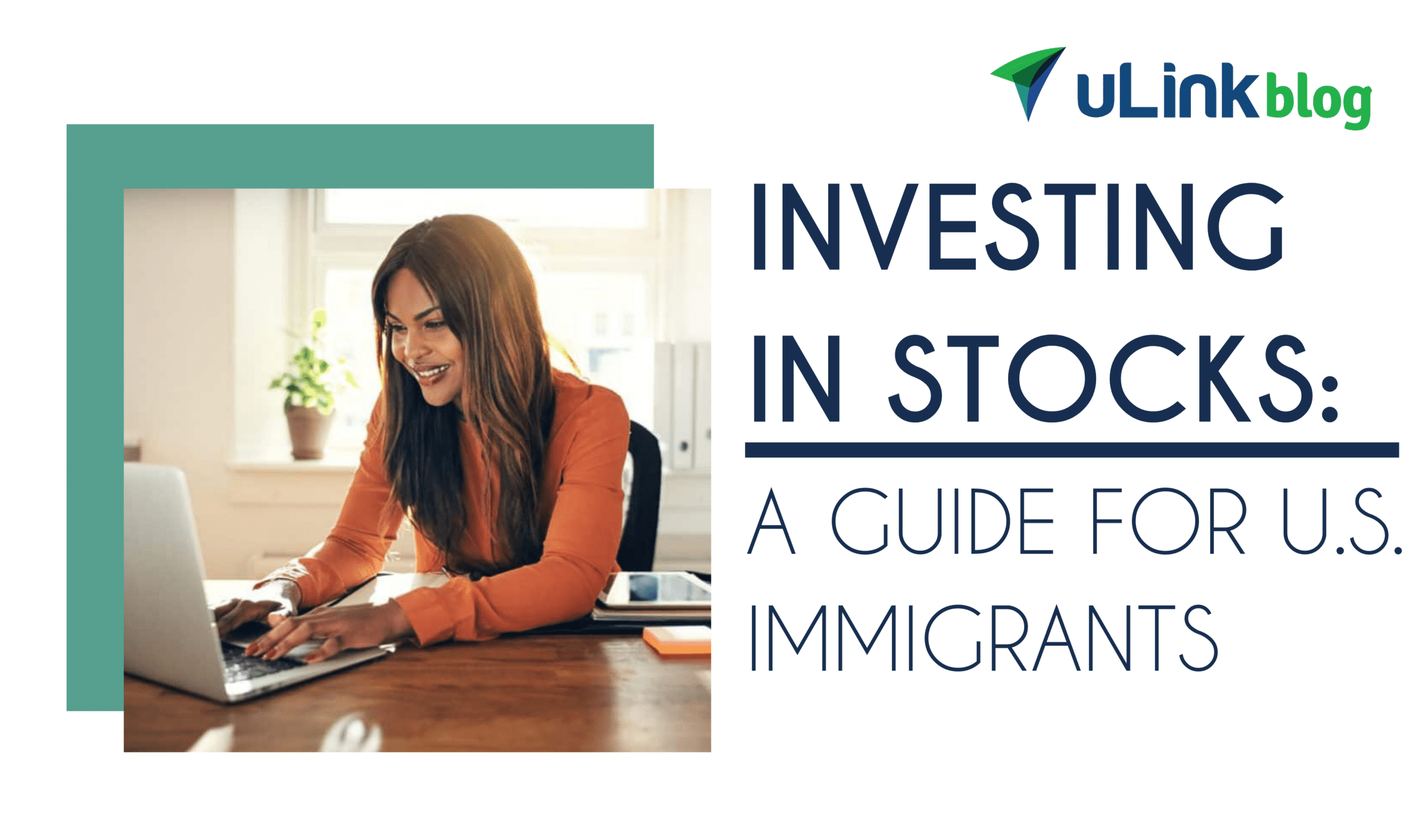
Don’t let the stock market overwhelm you. While it can certainly seem daunting at first glance, it will quickly become second-nature with a bit of practice.
Though it takes time to understand the market and to confidently withstand volatility, the payoff will be well worth your patience. Investing in the stock market is one of the most reliable ways for immigrants to grow their wealth.
Featuring key definitions and quick explanations, here is an introductory guide to investing in stocks:
The Stock Market: Key Definitions
What exactly is the stock market? Let’s start by defining stocks themselves.
A stock is a security that confers partial ownership of a publicly-traded company. These stocks are often called “shares,” and the more shares you hold in a particular corporation, the more you are entitled to its profits and assets.
So, why do companies issue stocks, and why do people buy them?
Take a major company like Amazon as an example. Amazon issues stocks to consumers for one reason: to fund their business ventures. Conversely, investors who buy Amazon stock are wagering that the company will continue to flourish and that the value of their shares will increase over time.
Investors determine the value of a company by the price at which they’re willing to buy or sell shares. And according to the laws of supply and demand, that value is constantly in flux (as you can see in real time).
The stock market itself is the aggregate of exchanges—like the NASDAQ and the New York Stock Exchange (NYSE)—where stocks are bought and sold.
When news headlines declare the market being either “up” or “down,” they are pointing to stock market indexes—like the S&P 500 or Dow Jones Industrial Average—which measure the performance of certain stocks.
If this seems confusing, think of it like this: say you want to order a pizza from Grubhub. In this scenario, Grubhub would function as the stock market, the vendor where all food delivery is bought and sold.
Before you place your order, however, you run a Yelp search to compare the customer reviews on two competing pizza shops. Yelp, in this case, would function as the S&P 500, the index which measures the performance of both shops and the public confidence in each of them.
Every time you buy a pizza, you (the investor) are betting on the continued success of that pizza shop.
Stocks function the same way—they just don’t taste as good.
An Overview of Investing Strategies
Although defined by volatility, the stock market has maintained a long and positive history for investors. According to Goldman Sachs, the average stock market return for ten years is 9.2 percent—for the past 140 years.
The S&P 500 has fared even better. As a measurement of America’s 500 largest publicly-listed companies, the S&P 500 has returned 13.6% annually over the last decade.
Each of these statistics speaks to two different investing approaches, which we’ll outline below: buying stock “funds” and selectively choosing individual stocks to build a portfolio.
In either scenario, your stocks are protected from taxes—so long as you leave them in the market. If and when you decide to sell your shares, however, you’ll be subject to capital gains taxes on it based on the length of time you held the stock.
Click here to calculate your capital gains taxes with NerdWallet’s Capital Gains Calculator.
Index Funds: A form of passive investing, index funds or ETFs (exchanged-traded funds) track the performance of a specific index—like the S&P 500. Popular ETFs will buy shares from a number of the top-performing companies and bundle them into one. This can be a great strategy for new investors, as ETFs feature broader diversification (the reduction of a portfolio’s exposure to risk), lower taxes, and above all, no need to actively manage the fund yourself.
Individual Stocks: As opposed to ETFs, this approach requires a dedicated interest to researching, evaluating, and monitoring stocks on a regular basis. Whereas an index funds view the long-term horizon of market success (and prioritize passive investing), individual stocks focus primarily on beating and timing the market through individual stock selection.
Whichever route you choose, know that the earlier you start, the more you stand to earn across your lifetime. Thanks to compound interest, your investments will steadily amass more wealth.
Here’s how compounding works: Say you invest $100 every month for ten years at an average annual return of 9 percent. By the end of that ten-year period, you will have made $18,468—$12,000 of which is your initial investment, $6,468 of which is the interest earned on your investment.
To build your own investing strategy, click here to use the Security Exchange Commission’s Compound Interest Calculator.
Opening an Investment Account
Once you’re ready to start investing, you’ll need to open a brokerage account.
These types of accounts are offered by major companies like Charles Schwab, Fidelity, and E*Trade—as you’ve probably seen advertised on TV. While each broker may offer individual incentives and perks, they all provide the same fundamental access to the market.
After you select your provider, you’ll then need to choose between an individual retirement account (IRA) and a standard brokerage account. While both accounts allow you to invest in the market, they have some key differences.
Though IRA accounts are a mainstay of retirement planning, the IRS limits the annual contributions you can make. As of 2021, adults under the age of 50 are capped at $6,000 per year.
Though an IRA should certainly be part of your financial picture, brokerage accounts will provide you more autonomy as you expand your investing horizons.
Once your account is open, you’ll be able to start putting your money to work.
Getting Started
As you start your investment journey, go slow. Investing is a long-term game that requires patience and steadiness as stocks rise and fall.
According to the wisdom of real estate mogul Warren Buffet, don’t time the market. Instead, prioritize maximizing your time in the market to reap sustainable long-term rewards.
At uLink, we know your loved ones are your most important investment of all.
With the uLink Money Transfer App, you can skip the long wait times and hidden fees and send money home fast. Thanks to our global network, you can send money to over 143,000 locations in 51 countries. And with our great exchange rates, fees starting as low as $0, and regular promotions such as fixed FX Flash Sales, you can send more money back home and save more.
Miles from home—just moments away with uLink.









